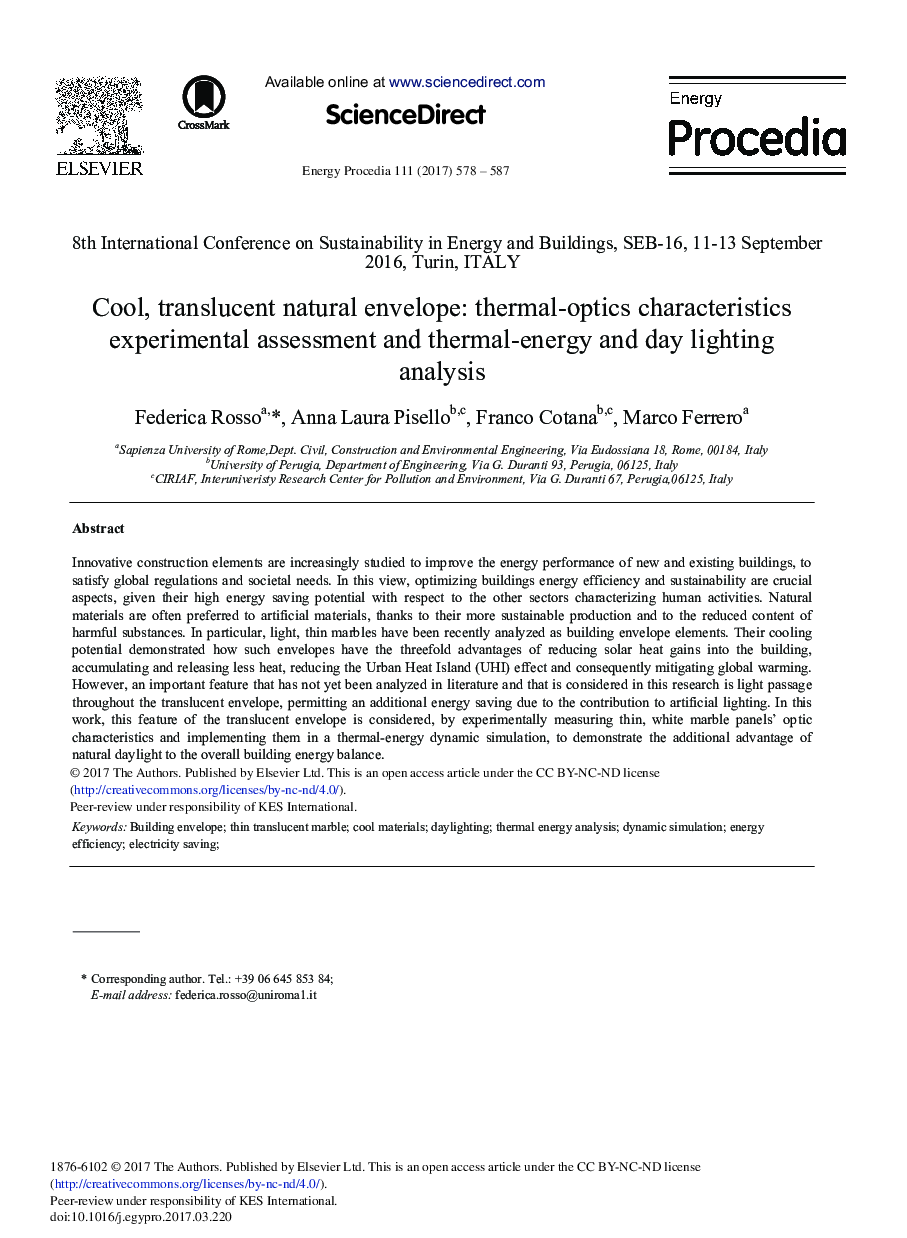| Article ID | Journal | Published Year | Pages | File Type |
|---|---|---|---|---|
| 5445574 | Energy Procedia | 2017 | 10 Pages |
Abstract
Innovative construction elements are increasingly studied to improve the energy performance of new and existing buildings, to satisfy global regulations and societal needs. In this view, optimizing buildings energy efficiency and sustainability are crucial aspects, given their high energy saving potential with respect to the other sectors characterizing human activities. Natural materials are often preferred to artificial materials, thanks to their more sustainable production and to the reduced content of harmful substances. In particular, light, thin marbles have been recently analyzed as building envelope elements. Their cooling potential demonstrated how such envelopes have the threefold advantages of reducing solar heat gains into the building, accumulating and releasing less heat, reducing the Urban Heat Island (UHI) effect and consequently mitigating global warming. However, an important feature that has not yet been analyzed in literature and that is considered in this research is light passage throughout the translucent envelope, permitting an additional energy saving due to the contribution to artificial lighting. In this work, this feature of the translucent envelope is considered, by experimentally measuring thin, white marble panels' optic characteristics and implementing them in a thermal-energy dynamic simulation, to demonstrate the additional advantage of natural daylight to the overall building energy balance.
Keywords
Related Topics
Physical Sciences and Engineering
Energy
Energy (General)
Authors
Federica Rosso, Anna Laura Pisello, Franco Cotana, Marco Ferrero,
